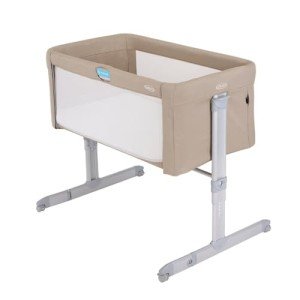The Ultimate Guide to Choosing a Baby Cot Bed: Safety, Features, and More
When it comes to welcoming a brand-new baby, among the most important purchases moms and dads will make is a baby cot bed. This necessary piece of furnishings is not only where a baby will sleep; it's also an area of comfort, safety, and security. Given the multitude of options readily available on the market today, making a notified decision can be frustrating. This guide aims to simplify the procedure by covering essential functions, security requirements, kinds of cot beds, and much more.
Table of Contents
- Intro
- What is a Baby Cot Bed?
- Security Standards
- Types of Baby Cot Beds
- 4.1 Traditional Cots
- 4.2 Convertible Cot Beds
- 4.3 Portable Cots
- Secret Features to Consider
- Choosing the Right Mattress
- Establishing the Cot Bed
- FAQs
- Conclusion
1. Introduction
A baby cot bed works as a dedicated sleeping area for babies and is designed to offer convenience and security. As brand-new parents navigate the various choices readily available, it is important to comprehend the different kinds of cot beds, safety standards, and important features to make the best choice.
2. What is a Baby Cot Bed?
A baby cot bed is a specialized piece of furniture where infants sleep. Unlike routine beds, cot beds are specifically developed for babies and supply a safe environment for them to rest. Cots Newborn feature high sides to avoid babies from falling out and typically included adjustable bed mattress heights to accommodate a growing kid.
3. Safety Standards
When picking a baby cot bed, safety needs to be the foremost factor to consider. Here are some vital security requirements to keep in mind:
- Certification: Ensure the cot bed fulfills nationwide and international security requirements, such as the ASTM International and Consumer Product Safety Commission (CPSC) guidelines.
- Slat Spacing: The distance between slats should not surpass 2 3/8 inches to avoid the baby's head from slipping through.
- Stability: Ensure that the cot bed does not wobble or shake.
- Non-Toxic Materials: Check for non-toxic finishes and products to guarantee the baby's safety.
4. Types of Baby Cot Beds
The market offers various types of cot beds, each dealing with various requirements. Below is a summary of the most common types:
4.1 Traditional Cots
Traditional cots are standalone furnishings items developed specifically for infants. They typically include fixed sides and multiple adjustable bed mattress heights.
4.2 Convertible Cot Beds
Convertible cot beds can be changed into young child beds, enabling extended usage. This type is an affordable option as it grows with your kid.
4.3 Portable Cots
Portable cots, likewise known as travel cots or playards, are lightweight and designed for families on the go. They can be easily assembled and taken apart for travel.
5. Secret Features to Consider
When selecting a cot bed, parents ought to consider the following features:
- Adjustable Mattress Height: This function permits decreasing the mattress as the baby grows, making it simpler for moms and dads to lift the child.
- Product Quality: Look for a cot bed made of durable, non-toxic wood.
- Security Features: Some cot beds come with rounded edges and extra safety locking mechanisms.
- Ease of Assembly: Check if the cot bed needs minimal tools for assembly and how easy it is to take apart.
- Storage Options: Some cot beds feature built-in drawers for saving baby fundamentals.
6. Selecting the Right Mattress
The best mattress is essential for your baby's sleep quality. Here are some ideas for picking a suitable mattress:
- Firmness: A mattress must be firm enough to avoid the baby from sinking in too deep, lowering the risk of suffocation.
- Breathability: Opt for breathable products to make sure proper air circulation.
- Water-Resistance: Consider water resistant covers for easy cleaning and health.
7. Setting Up the Cot Bed
Setting up the cot bed properly is essential for safety. Here are steps parents ought to follow:
- Choose the Right Location: Place the cot bed far from windows, cables, and other prospective hazards.
- Inspect the Height: Adjust the mattress height based on the child's age and movement.
- Eliminate Extras: Avoid positioning pillows, blankets, or packed toys inside the cot bed when the baby is sleeping.
- Examine Regularly: Regularly inspect all parts and screws for wear and tear.
8. FAQs
Q1: At what age should a baby transition from a cot to a bed?
Many kids shift to a young child bed between 18 months to 3 years, depending upon their advancement and private requirements.
Q2: How can I guarantee my baby sleeps securely in their cot bed?
Make sure the cot is without soft bed linen, toys, and anything that might obstruct the baby's breathing. Follow all safety standards thoroughly.
Q3: Is it essential to have a different nursery for the cot bed?
While many parents pick to have a different nursery, it is not a need. As long as the cot bed remains in a safe and peaceful environment, it can be positioned in the parents' bed room.
Q4: When is it safe to decrease the mattress?
Typically, the bed mattress ought to be lowered when the baby can pull themselves up or when they can sit separately, typically around 6 months.
9. Conclusion
Selecting the right baby cot bed is a basic aspect of preparing for a brand-new arrival. Moms and dads must prioritize safety, performance, and quality, ensuring that the cot bed satisfies their family's distinct requirements. By putting in the time to research and understand different types of cot beds, parents can supply a safe and comfy sleeping environment for their little one to grow.
With mindful factor to consider, parents can ensure that the cot bed is not simply a piece of furnishings, however a sanctuary where their baby can sleep peacefully throughout those important early years.

